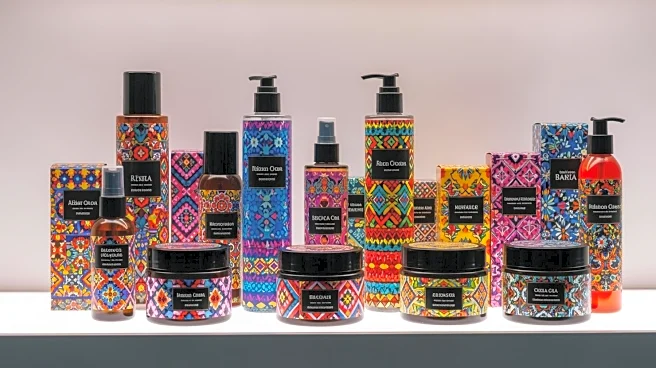What's Happening?
The beauty industry is increasingly focusing on the preferences of Hispanic consumers in the United States, who are reshaping packaging strategies. According to NielsenIQ, Hispanic households account for 14.8% of beauty buyers but contribute 18.9% of total
beauty spend. This demographic values authenticity, cultural relevance, and sustainability, prompting brands to evolve their packaging designs. Collaborations like Rare Beauty x Tajín, which feature culturally inspired packaging, exemplify how design can celebrate identity and drive engagement. Hispanic consumers are also more responsive to clean and eco-conscious claims, with upcycled packaging claims growing significantly in Hispanic markets.
Why It's Important?
The shift in packaging strategies to cater to Hispanic consumers is significant for the beauty industry, as it represents a growing and influential market segment. By aligning packaging with cultural values and sustainability, brands can foster deeper emotional connections and loyalty. This approach not only enhances brand perception but also taps into the increasing demand for eco-friendly products. As Hispanic consumers make more beauty trips per year compared to non-Hispanic shoppers, brands have the opportunity to capture a larger share of the market by delivering packaging that is both functional and meaningful.
What's Next?
Brands and packaging professionals are likely to continue innovating in response to Hispanic consumer preferences. This may involve further collaborations that celebrate cultural identity and the adoption of sustainable materials and certifications. As online shopping accelerates, packaging that stands out visually and delivers a seamless experience will be crucial. The focus on intentional design is expected to grow, with brands aiming to earn loyalty from one of the beauty industry's most influential audiences.
Beyond the Headlines
The emphasis on culturally relevant and sustainable packaging reflects broader societal trends towards inclusivity and environmental consciousness. This shift may influence other industries to adopt similar strategies, highlighting the importance of understanding diverse consumer needs. The long-term impact could lead to more comprehensive risk disclosure and sustainability practices across various sectors.














